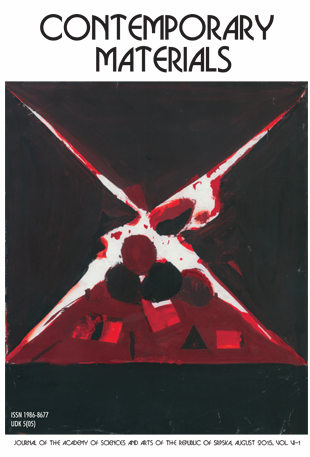ASSESSMENT OF ENAMEL SURFACE AFTER APPLICATION OF TUNGSTEN CARBIDE BUR FOR RESIDUAL ADHESIVE REMOVAL
DOI:
https://doi.org/10.7251/COMEN1802137AAbstract
Introduction: Enamel damage often occurs in a process of adhesive removal after the completion of therapy with fixed orthodontic appliances. The aim of this study was to evaluate the enamel surface after applying a 12-fluted round tungsten carbide bur for adhesive removal at different speeds of dental micro motor after debonding brackets.
Material and method: On 40 human premolars, extracted for orthodontic purposes, metal brackets were bonded with composite material. After removing the brackets, the sample was divided into two groups: group A - 20 teeth from which the rest of the composite material was removed with a round tungsten carbide bur at 8,000 rotations per minute and group B - 20 teeth from which the rest of adhesive was removed with a round tungsten carbide bur at 32,000 rotations per minute. For each sample, four images were made under different magnifications by scanning electron microscopy, and the damage estimation was performed using the Enamel damage index (EDI) and Surface roughness index (SRI).
Results: The most common EDI score on the overall level was 3 (62.5%), while the most commonly represented SRI score was 2 (52.5%). There was no statistically significant difference in the average values of the EDI index (t (38) = -.96, p> .05) and in the average SRI index values (t (38) = -. 89, p> .05) between two tooth examined groups.
Conclusion: Enamel damage was found after applying a round tungsten carbide bur at 8,000 and 32,000 rpm. The number of rotations per minute did not affect the size of enamel damage.
Keywords: Round tungsten carbide bur; Enamel damage index; Surface roughness index.
